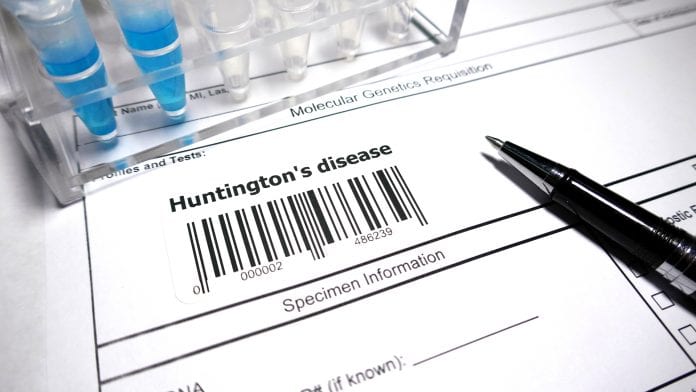
An enzyme has been identified that can pave the way for the development of a new route of treatment for Huntington’s Disease.
Scientists at EPFL’s Brain Mind Institute have identified the enzyme TBK1 which plays a central role in the regulation, degradation, and clearance of the huntingtin protein that contributes to the development of Huntington’s Disease. The team believe this discovery could pave the way for viable therapeutic strategies for the treatment of the disease.
Huntington’s disease is a rare and debilitating brain disorder that causes uncontrolled movements, psychological problems, and loss of cognition. It is caused by a mutation in the gene that encodes the huntingtin protein. Currently, the most common treatment for Huntington’s is to lower the levels of huntingtin or to inhibit its aggregation – or a combination of both.
The TBK1 enzyme
The TBK1 enzyme identified by the scientist performs both of these actions – lowering levels of huntingtin and inhibiting its aggregation. The TBK1 enzyme is known as a ‘kinase’ – which are enzymes that add phosphate groups to various biomolecules like proteins or DNA. These phosphate groups are ‘energy-carriers’, so adding one essentially ‘turns on’ the receiving molecule.
Professor Hilal Lashuel at EPFL said: “We believe that this represents a viable target for the development of possible treatment of Huntington’s disease. However, to explore the therapeutic potential of phosphorylation [the chemical addition of a phosphoryl group], we needed to identify the natural kinases that do the job inside the cell.
“After screening hundreds of kinases, we were excited to identify TBK1, because it did the job with high specificity and efficiency.”
The team tested this in an animal model of Huntington’s Disease: the worm C. elegans, which confirmed the results.
“Our work shows that TBK1-mediated increase in phosphorylation and/or promoting mutant huntingtin autophagic clearance represent viable therapeutic strategies for the treatment of Huntington’s Disease,” said Ramanath Hegde, who led the study.
“We are very excited about these findings,” said Lashuel. “TBK1 has also been shown to regulate the clearance and degradation of proteins implicated in other neurodegenerative diseases. Mutations in TBK1 have also recently been linked to ALS and result in impaired autophagy, which leads to the accumulation of aggregates. Our goal is to find small molecules or drug pathways and to develop these for multiple neurodegenerative diseases.”






















